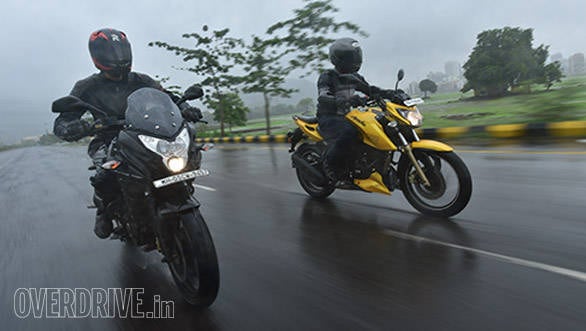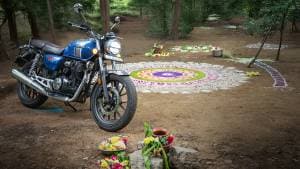Tips for riding in the rain
And so here we are in the rainy season once again. We have talked about this before in Better Riding but I think it is relevant to revisit this topic. Here are the ten things you should know about riding in the wet.
1. Is your bike ready?
If your bike is relatively new, then most often, it is ready. You do need to check two or three things. First, see that your chain is well-lubed. Chains take quite the bashing in the wet because the wet is also dirty, lubed is protected. Second, check your tyres. They should have enough tread as well as enough grip. Standard tyre pressures work best. Under inflation may feel better but it will hasten aquaplaning too.
2. Are you ready?

I prefer cheap all-plastic rain suits that last one season to more expensive suits that last one or two seasons. I ensure the rain jacket is big enough to go on top of my riding jacket and that the pants come down to the ankles. Brighter colours are better than darker or neutral shades for visibility. This is also a good time to opt for a new, unscratched, clear helmet visor.
3. How much grip do you have?
Just let your heel gently rub the surface of the road as you ride when you're not sure how much grip there is. Don't put any pressure through that heel, but the sensation should tell you what you need to know. As a thumb rule, the slipperier it is, the shinier it will usually look.
4. Are all your lights working?
They should be and you should run your parking lamps right through the season, even in the daylight. On extra-murky days, use the head lamp as well. Being seen is a big deal when it comes to being safe and the rains make this harder to do.
5. Don't be afraid to not ride
There is no shame in not taking a chance. I never ride in the first couple of showers because it is incredibly slippery until the accumulated oil, grease and crud has been washed off. So if you aren't feeling good, the mature thing to do is to park the bike for the day.
6. Be smooth
Sudden inputs break traction. Learn to be smoother with the throttle, brakes as well as steering. Learn this well, because it works in the dry as well, and makes you faster overall.
7. Use your body
All of us feel more confident when we are upright, correct? In the rains, turn your shoulders into the corner and lean forward and down through corners. It makes the bike sit up on to a fatter part of the tyre. You can help further by pushing down on the outer footpeg.
8. Be steady through standing water
Standing water stops you from reading what the surface underneath is, hastens aquaplaning and can stop your engine. Trick is to ride at a smooth, steady clip through it but not too fast. Keep a firm grip in case a stone or pothole causes a jolt but don't grip the bars until your knuckles turn white. And finally, you want to maintain steady or rising revs through the crossing. Dropping the revs is when the exhaust gets blocked and the engine stalls.
9. It's just water
Remember that at it's very worst, what is around you and splattering on you is basically dirty water. You will not melt. A shower and a scrub afterwards will restore to you humanity once more. So this too shall pass. The more fun you have in the rain, the less work it becomes.
10. Keep your distance
Low traction means bikes take longer to complete normal things - like turning or braking. Make room. Avoid running close to vehicles ahead - you'll get splashed and you'll be unable to stop in an emergency. Hanging back will also let you see more ahead. The further ahead you can see, the better decisions you can make, and the smoother your ride becomes.











